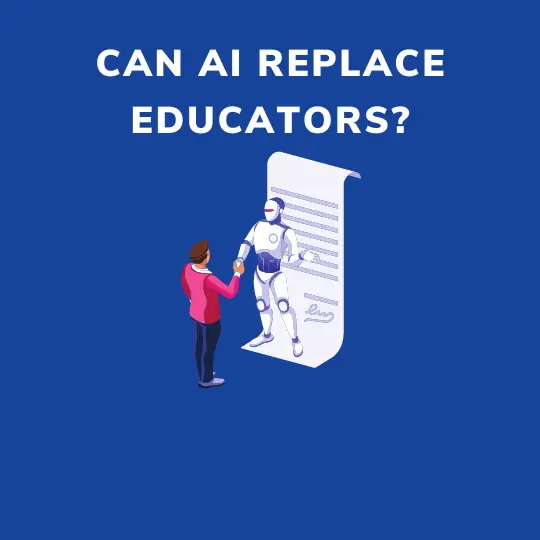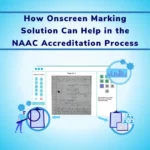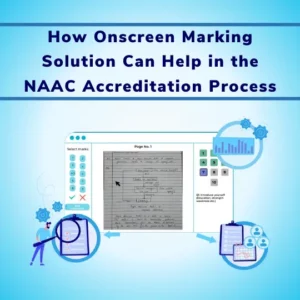
Article Contents
Introduction
AI is the next big thing in the education
The advancement of AI technology has brought about numerous benefits in various industries, including education. The integration of AI in education has resulted in an ongoing debate about the future of education and the extent to which it can replace educators. AI-powered tools are changing the face of education.
Edtech tools are becoming more efficient and dynamic with AI
The tools have come up with a variety of advantages such as higher efficiency, accuracy, and speed. While we say that these tools are more efficient, their role; by their nature, is limited to assisting a human.
Educators can become more efficient and productive with the AI tool. Having said that, Artificial intelligence has the potential to enhance education and support educators, but it is not a replacement for human teachers.
It is a must for educators to adopt these AI tools to improve the learning outcomes of their students
But wait, that’s not all, we must understand that AI is changing the trajectory of the way students learn, it is a need of the hour that educators must adopt AI to sustain and grow in their profession.
Here are some interesting statistics and future aspects of AI in education:
Adoption rate: According to a report by Grand View Research, the global AI in education market size was valued at $1.17 billion in 2020 and is expected to reach $3.76 billion by 2028, growing at a CAGR of 16.2% from 2021 to 2028. This growth reflects the increasing adoption of AI in education globally.
In the future, AI has the potential to play an even larger role in education by providing real-time data and insights to educators, helping to personalize instruction, and making learning more engaging and accessible for all students. The goal of AI in education should be to support teachers and enhance the learning experience for students, rather than replace them.
AI won’t replace educators, but the human who uses AI will !
However, it’s important to note that while AI can assist educators, it cannot replace the human connection and empathy that teachers bring to the classroom.
The role of the educator is to inspire and guide students, not just to impart information. The best way to utilize AI in education is as a tool that supports, not replaces, human teachers.
Recent data shows that AI is being widely accepted in the education sector and is predicted to be accepted even more broadly in upcoming times
What are some ways you can actually make AI work for you?
AI can help you in many ways, let’s take an example,
Here is how AI can help you to improvise and embellish the study notes that you share with your students
Various universities worldwide including RV university, IIIT-Bangalore, and Dayananda Sagar University, Bangalore have banned the use of ChatGPT for their students considering the impact of ChatGPT on the learning outcome. ChatGPT can be predominantly used to solve assignments which may limit the creativity of students. Considering this fact, varsities are even considering changing the nature of assignments.
However, you can use ChatGPT to improve your education experience…

1. Simplifying Language
By using ChatGPT, teachers can simplify the complex language in their study notes, making it easier for students to understand the material. They can input the text from their notes and use ChatGPT’s natural language processing capabilities to rephrase it into simpler, more concise language.
2. Creating FAQs
Teachers can create frequently asked questions (FAQs) related to the subject matter and use ChatGPT to generate accurate and concise answers. This will provide students with a quick reference for understanding key concepts and help reinforce their learning.
3. Improving Wording
ChatGPT can be used to replace vague or overly complex language with more precise and fit-for-purpose words. This will improve the clarity and accuracy of the study notes and make it easier for students to grasp the material.
4. Generating Case Studies
Teachers can use ChatGPT to generate case studies that illustrate key concepts and theories in a practical, real-world context. This will help students better understand the material and see how it applies in real life. Additionally, case studies can provide a useful tool for evaluating students’ comprehension of the subject matter.
5. ChatGPT for Interactive Learning
ChatGPT, OpenAI’s large language model, can be integrated into an ed-tech tool to provide students with an interactive learning experience. Teachers can use ChatGPT to answer questions, provide explanations, and generate interactive scenarios to help students better understand complex concepts. This will create a more engaging and personalized learning experience for students, helping to improve their retention of the material.
ChatGPT has found a very high acceptance among all professionals across industries.
Here are a few more AI tools that you should consider trying–
Problem: Question Bank Creation problem.

1. Auto Question Bank Generator
This AI-integrated Edtech tool automatically generates a comprehensive question bank with high accuracy and customization. It can be tailored to meet the specific needs of educators, making it easier for them to create and administer assessments.
This tool can also help reduce the time and effort required to create assessments, freeing up teachers to focus on other aspects of their teaching.
2. AI Remote Proctoring
AI remote proctoring allows students to take exams from any location and at any time, providing them with increased flexibility and convenience.
The AI system uses advanced algorithms to monitor and detect any potential cheating, making it a secure and reliable option for online exams.
Human proctoring can be combined with AI proctoring to conduct proctored exams for a large number of students with the least human resource. AI remote proctoring makes 24×7 secure exams possible in a real sense.
3. AI Auto Descriptive Answer Evaluator
This AI-integrated Edtech tool automates the process of grading descriptive answers, freeing up teachers from the time-consuming task of manual grading.
The AI system uses natural language processing and machine learning algorithms to accurately evaluate students’ responses, providing them with feedback and a score that reflects their understanding of the material.
This tool can help to improve the efficiency and accuracy of the grading process while providing students with quicker and more detailed feedback on their performance.
Synthesia

Synthesia can help educators to automate the video generation process. So if you want to make educational videos, you can just provide text input to them and it would help you to generate video content out of it. You can generate videos in 120 languages using this tool.
Your e-learning content creation would be on a fast track using such tools.
This tool can make custom educational videos within minutes, freeing up time for educators to do more meaningful work. The videos made with this AI tool can turn out to be a great way to increase student engagement and improve learning outcomes.
Conclusion
Adoption of AI across the education sector has increased significantly, AI-powered tools like the AI Question Bank Generator, Auto Descriptive Answer Evaluation, and AI-driven Remote Exam Invigilation are changing the face of education. These tools are helping to simplify and automate the assessment process, increasing efficiency, accuracy, and speed.
Despite these advances, AI has its limitations and cannot replace the human connection and empathy that is so important in the learning process. The future of AI in education will be one of collaboration between technology and human expertise, and it is crucial that we never forget the importance of the human touch in the classroom.
Further, we must acknowledge that although AI won’t replace educators, it is necessary for educators to adopt AI to sustain and grow in their careers and deliver the best to their students.
It is rightly said that-
AI won’t replace educators, but the human who uses AI will!



![How Government-Led Exams at 250+ Locations Are Setting New Standards of Integrity [Case Study]](https://www.eklavvya.com/blog/wp-content/uploads/2024/04/Enhancing-Exam-Integrity-Government-Certification-in-250-Locations-150x150.webp)
![Transforming Central Govt. Exams Evaluation: How Onscreen Marking is Leading the Charge [Case Study]](https://www.eklavvya.com/blog/wp-content/uploads/2024/04/How-Onscreen-Marking-Revolutionized-Central-Govt-Exams-Case-Study-1-150x150.webp)















![How Onscreen Marking Revolutionized Central Govt Exams [Case Study]](https://www.eklavvya.com/blog/wp-content/uploads/2024/04/How-Onscreen-Marking-Revolutionized-Central-Govt-Exams-Case-Study-1-300x300.webp)

